On April 27, 2024, the Shanghai Climate Week 2024 Youth Climate Action Science and Innovation Presentation, guided by the Publicity and Education Center of the Ministry of Ecology and Environment, jointly organized by the Shanghai Energy Conservation and Emission Reduction Center Ltd., Shanghai Green Light-Year, with support from Shanghai Climate Week and Zhejiang Inresst, was successfully held at the EV-AI Smart Mobility Harbor in Shanghai. Shanghai Energy Conservation and Emission Reduction Centre Ltd. provided a hydrogen fuel cell bus for the event.
Address

Education Department, Publicity and Education Center of the Ministry of Ecology and Environment
Director Zhuxu Zhen
Climate change has become an omnipresent issue, affecting people of all ages. Whether countries, businesses, communities, or individuals, every actor is taking action. In particular, young people need to take action, as you will be the leaders and decision-makers of the future. Therefore, climate action requires participation from all age groups to collectively address the negative impacts of climate change. At the same time, we encourage young people to step onto the international stage and voice the stories of China, popularizing China’s efforts and achievements in climate action.

UNESCO China’s Director of Sustainable Development Education Project, Director of the Ecological Civilization and Sustainable Development Education Innovation Studio at the Beijing Academy of Educational Sciences, and State Council Special Allowance Expert
Dr. Gendong Shi
In the vast universe, humanity seems so small, yet our existence holds immense significance. As inhabitants of Earth, we should strive to coexist harmoniously with nature and play the role of stewards of our planet. In the process of sustainable development, we need to harness advanced technologies such as artificial intelligence to advance human civilization while constantly bearing in mind the protection of the Earth and sustainable development.

Shanghai International Automobile City (Group) Co., Ltd.
Assistant to the General Manager
Mr. Jie Chen
In the journey to address climate change, actively promoting the transition to clean energy is a crucial measure. EV-AI Smart Mobility Harbor has been dedicated to this cause for the past fifteen years and has been at the forefront of driving the development of new energy vehicles nationwide, establishing itself as a leader in energy transformation. Energy transition involves not only the development of electric vehicles but also the promotion and wider application of hydrogen fuel cell vehicles. By promoting the use of electric and hydrogen fuel cell vehicles, the public can enjoy more environmentally friendly travel modes, such as electric cars, hydrogen fuel cell vehicles, and public transportation. Only through the collective participation of the public in energy transition can we truly achieve effective alleviation of the climate change crisis and create a cleaner, greener future.
The event invited 22 young people from China and abroad to share their experiences, innovative actions, and solutions in addressing climate change, We also invited Junior Climate Activist and UWC Changshu United World College access student Gao Jinghan to be the moderator. Over 1300 individuals participated in the Youth Climate Action Science and Innovation Presentation, both in-person and online.

Youth Climate Action on Science and Innovation Presentation
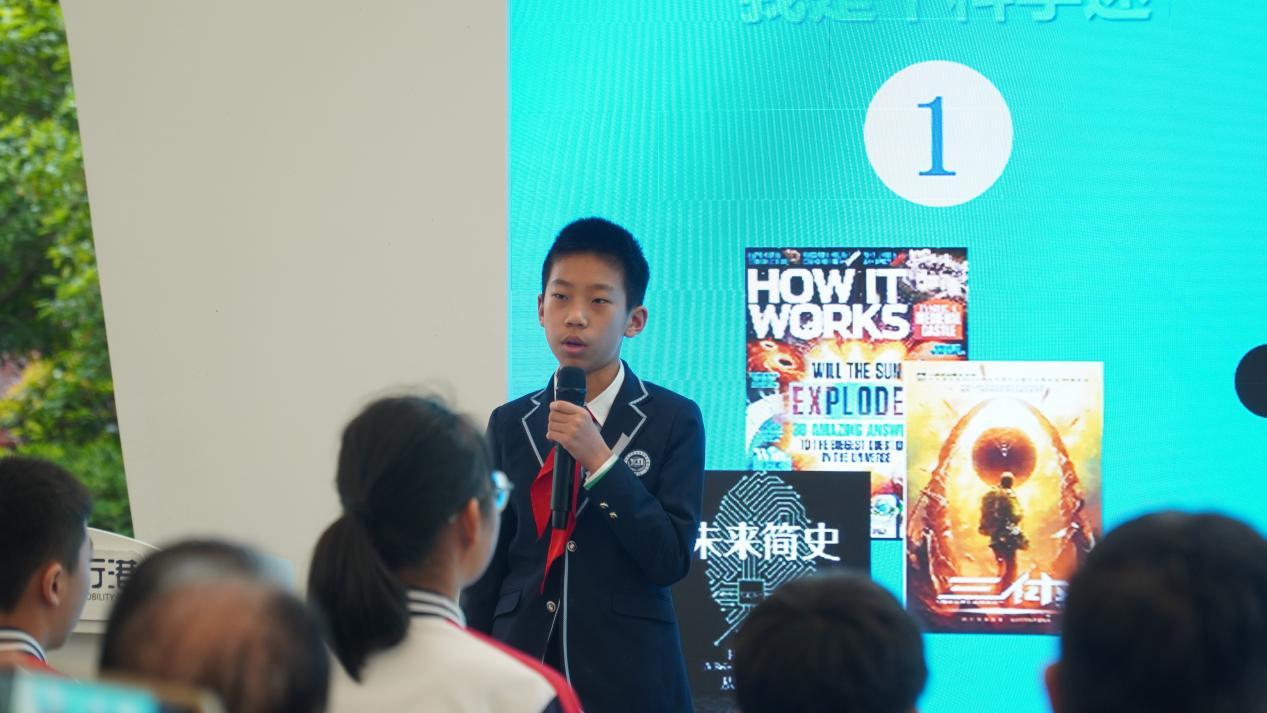
Guest Speaker: Zhang Junyao, Xindu Experimental Middle School, Branch of Qibao Middle School
Topic: The Relationship between Green Charging Modes for New Energy Vehicles and Electricity Usage Behavior
New energy vehicle owners tend to charge their vehicles at home and in the workplace, and their charging habits are influenced by electricity prices and usage behavior. They flexibly adjust charging times based on electricity prices to save costs. The following suggestions are recommended for charging facility suppliers to consider:
- Establish charging stations in residential areas and workplaces to meet users’ location-based needs.
- Set up both fast-charging stations and standard charging stations based on users’ charging habits.
- Encourage users to charge during off-peak hours to reduce frequent load peaks and meet the demand for green environmental protection.
- Promote incentive measures to encourage users to use clean energy sources such as solar energy for charging, reducing reliance on traditional energy sources and achieving emission reduction.

Guest Speaker: Zhu Ningwei, 3rd Grade, Penglai Road Second Elementary School
Topic: Studying the Mysteries and Functions of Tropical Rainforests Without Leaving Home
There are a variety of ecological landform systems on Earth, including deserts, grasslands, wetlands and the tropics. Tropical rainforests are known as the lungs of the earth because they regulate the temperature and purify the air, and provide habitat for more than 10,000 species of plants and animals. However, the world’s tropical rainforests are disappearing as a result of human activities. China’s tropical rainforests only 10% of the original, the situation is very serious!
So I built a mini rainforest eco-tank at home to explore the effect of rainforest plants on air purification in a low-carbon and “stay-at-home” way, and to call for the protection of tropical rainforests. After simulating the living environment of tropical rainforest plants, we recorded the growth process of the plants in the tank for a long time to cultivate a mini tropical rainforest ecosystem. Subsequently, we used a before-and-after control method and a lit cigarette to simulate the pollution of PM2.5 to monitor the changes of formaldehyde, PM2.5 and TVOC in the ecological tank. Finally, the test results were obtained: the tropical rainforest can effectively and adequately purify the air of harmful substances, such as formaldehyde, PM2.5 and TVOC.
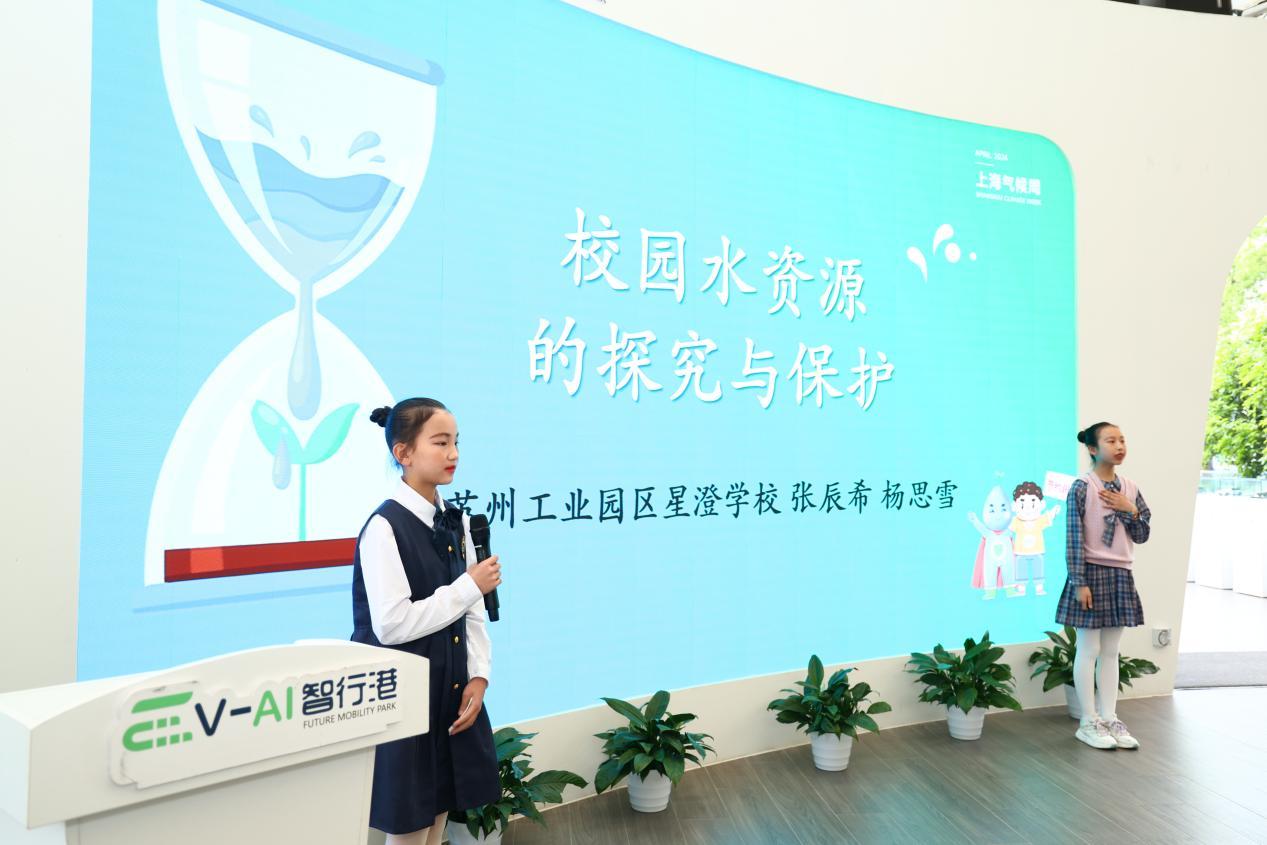
Guest Speakers: Yang Sixue, Zhang Chenxi, Xingcheng School, Suzhou Industrial Park
Topic: Campus Water Saving Plan Research
The exploration and protection of water resources on the campus are essential. While strolling through the campus, one can often observe the wastage of water resources, such as overflowing water coolers due to untimely repairs of the school’s plumbing. Despite teachers and parents constantly emphasizing the importance of water conservation, many people still lack awareness of water-saving practices and turn a blind eye to continuous running water. Therefore, we conducted an investigation and analysis of the rational utilization of water resources on the campus, aiming to implement substantial changes and strategies based on our research findings. We have the following ideas:
- Replace water equipment with devices that meet national water flow standards.
- Improve certain areas and pipelines in the school to ensure timely storage and recycling of gray water.
- Establish a transparent water usage system in the school. Water meters can be installed in each department and location, with regular meter reading and recording to allow for comprehensive monitoring of water usage and network operation, enabling intelligent and precise management.
- Strengthen water conservation awareness campaigns.

Guest Speaker: Liu Shichen, Preparatory Class, Affiliated Foreign Languages School of Shanghai International Studies University
Topic: Research on the Impact of Campus Plants on Environmental Health
Plants are diverse and intricately linked to human life. Different plants have different characteristics, some of which have a positive impact on human life, while others have negative effects. Beautiful flowers and plants are found everywhere in the school, accompanying us as we grow. I feel a responsibility to contribute to the improvement of the campus environment and the creation of a harmonious and sustainable environment between humans and nature. After on-site testing, we have the following suggestions:
- Caring Bamboocan to some extent reduce the content of PM2.5 in the air, and has the potential to absorb sulfur dioxide in the air and chromium in the soil, making it an excellent plant for campus greening.
- Agropyroncan potentially absorb sulfur dioxide (SO2) in the air and nickel in the soil and is suitable for expansion in the campus planting area.
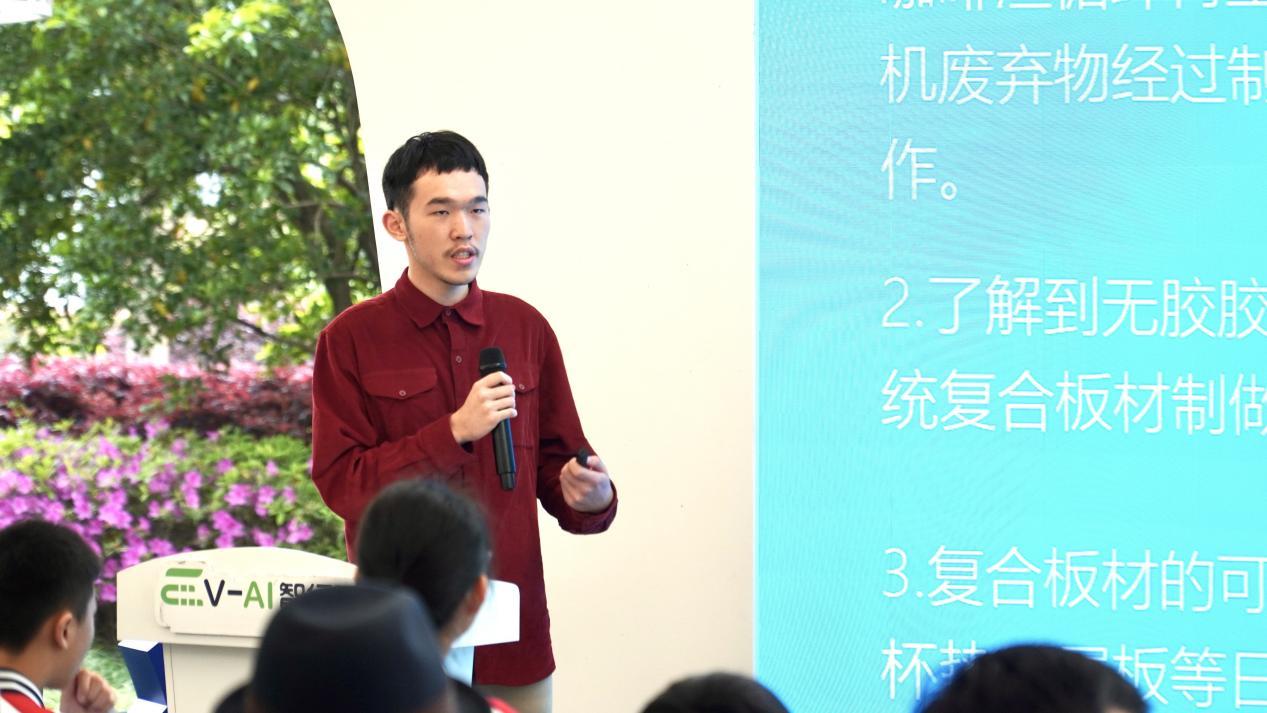
Guest Speaker: Shen Enyu, Xuhui High School
Topic: Campus Fallen Leaf Recycled Non-Adhesive Decorative Panels
During the leaf-falling season, the school grounds are covered with fallen leaves. Upon inquiry with the school cleaning staff, it was found that the collected leaves were not being fully utilized, leading to additional manpower, economic, and environmental costs in subsequent processing. This research project aims to explore the innovative value of fallen leaves and provide creative solutions for their management. Through experiments, we have discovered that fallen leaves can be used as a base layer to create non-adhesive decorative panels, applicable for displays or decorative purposes. In the future, we will continue our experiments to enhance the strength of the panels.
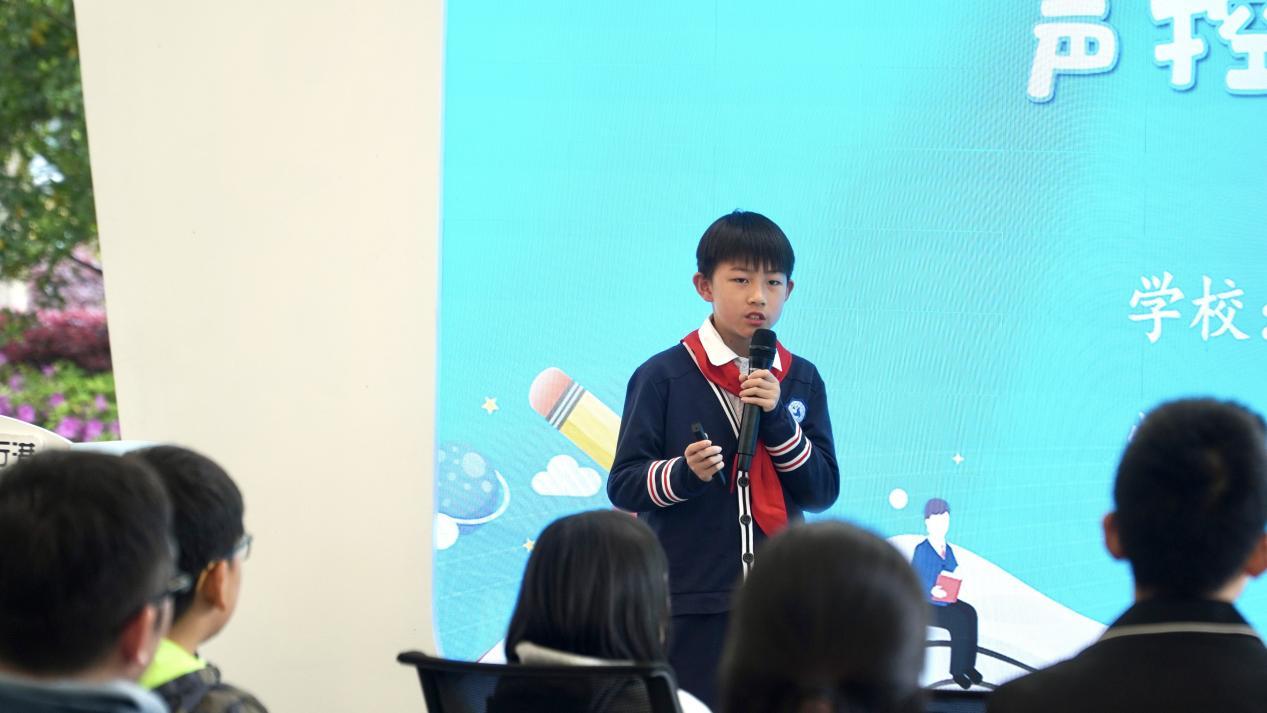
Guest Speakers: Zhou Zehan, Shen Yuyue, Zhong Yuan, Qianjing Primary School, Jinshan District, Shanghai
Topic: Exploring Smart Energy Conservation: Voice-Controlled Brightness-Adjustable Lamps
Dim lighting during reading can easily lead to myopia, and leaving the room frequently results in forgetting to turn off the desk lamp, causing energy wastage. To address this issue, we designed a voice-controlled brightness-adjustable lamp. This lamp can be placed at the bedside or on the desk and can be controlled by voice command to adjust the LED light’s switch and brightness. When the light is on, the brightness can also be adjusted using the knob on the lamp, satisfying the reading needs while reducing energy wastage.

Guest Speaker: Zimo Yang, Shanghai Yangpu Junior Middle School
Topic: Research and Practice of Plastic Re-Classification Based on Dioxin Reduction in Waste Incineration Power Generation
My research project focuses on exploring the final destination of classified waste. I have found that only a small portion of waste is used for waste incineration power generation and that the dioxins produced during incineration play a crucial role in building waste-free cities. Therefore, I have dedicated myself to finding methods to reduce dioxin emissions, emphasizing the strengthening of plastic classification and monitoring at the source. Through re-classification of unsuitable plastics, significant reductions in dioxin emissions have been achieved. Additionally, I propose the use of chip management for certain plastic products such as plastic cabinets and containers, by implanting NFC chips to ensure complete harmless management throughout their lifecycle. Furthermore, the introduction of national guidelines and corresponding measures is crucial for clarifying legal responsibilities and establishing a collaborative plastic recycling chain. This work is significant in advancing urban sustainable development and environmental protection efforts, enhancing the feasibility and necessity of the project. It is essential for us to collaborate and implement the principles of sustainable development, promoting the environmental protection of waste incineration power generation processes and contributing our efforts to building cleaner and more environmentally friendly cities.

Guest Speakers: Shen Linyuan, Shanghai Zhonghua High School; Liu Enze, Shanghai Nanyang Model Junior High School
Topic: Youth Climate Action Practice – Understanding Water Quality Changes “Algae” Know
The proliferation of algal blooms poses significant challenges to aquatic ecosystems, water quality, and ecological balance. In response to the negative impact of algal blooms, we conducted in-depth experimental research and proposed an initiative for algae control. This initiative includes increasing the oxygen content in water by enhancing water flow to transform “stagnant water” into “active water”; altering water quality by reducing sewage discharge and increasing aquatic plants (such as cattails, shallots, periphyton, and filamentous algae); and biological control in water, including the introduction of nitrifying bacteria. These measures aim to improve the health of water bodies, effectively control algal blooms, and maintain the stability of aquatic ecosystems and ecological environments.
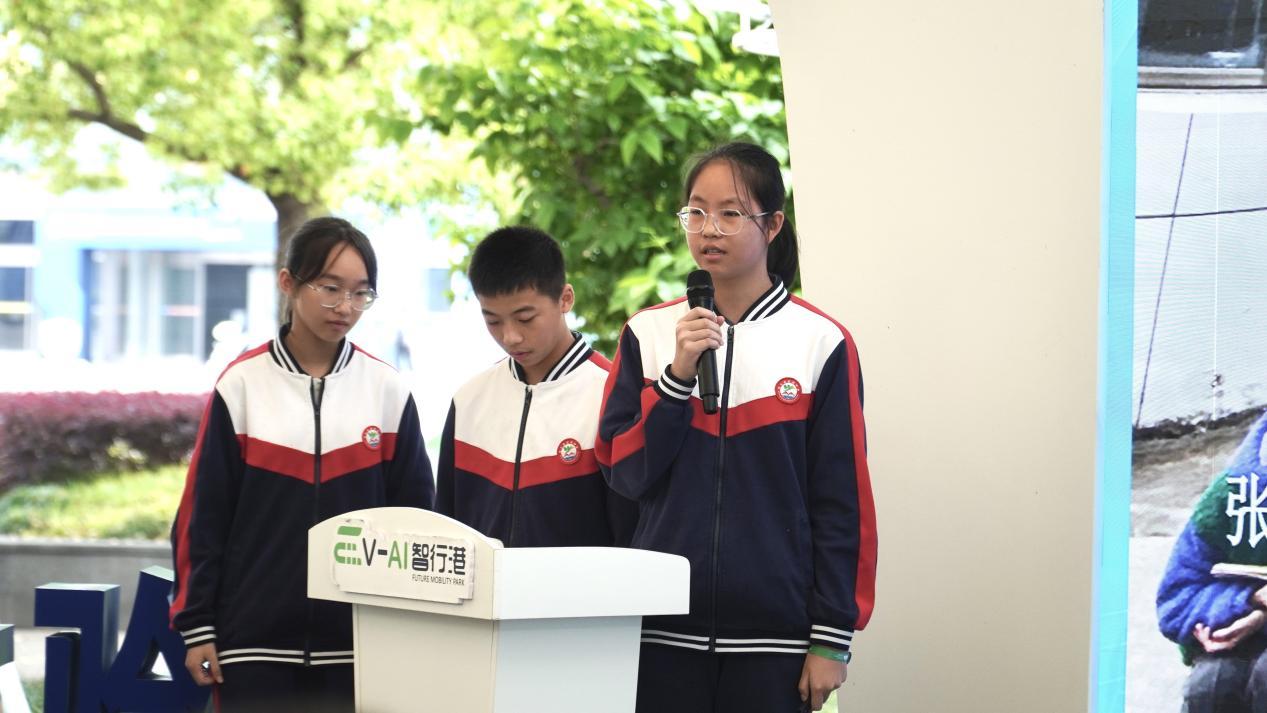
Guest Speakers: Zhang Hanqi, Shu Tianyi, Ma Xinyan, Wuyang Middle School, Wuyi County
Topic: Exploring Climate Proverbs and Addressing Climate Change
We conducted research on climate proverbs to verify if the proverbs summarized by our ancestors are still applicable in real-life scenarios. This project not only serves as a powerful platform for climate change education but also provides an effective complement to current weather forecasts. Additionally, it offers essential references for researching local climate change. Through this approach, we can gain a deeper understanding of the impact of climate change on our daily lives and draw valuable lessons, providing a more comprehensive and scientific basis for addressing climate change.
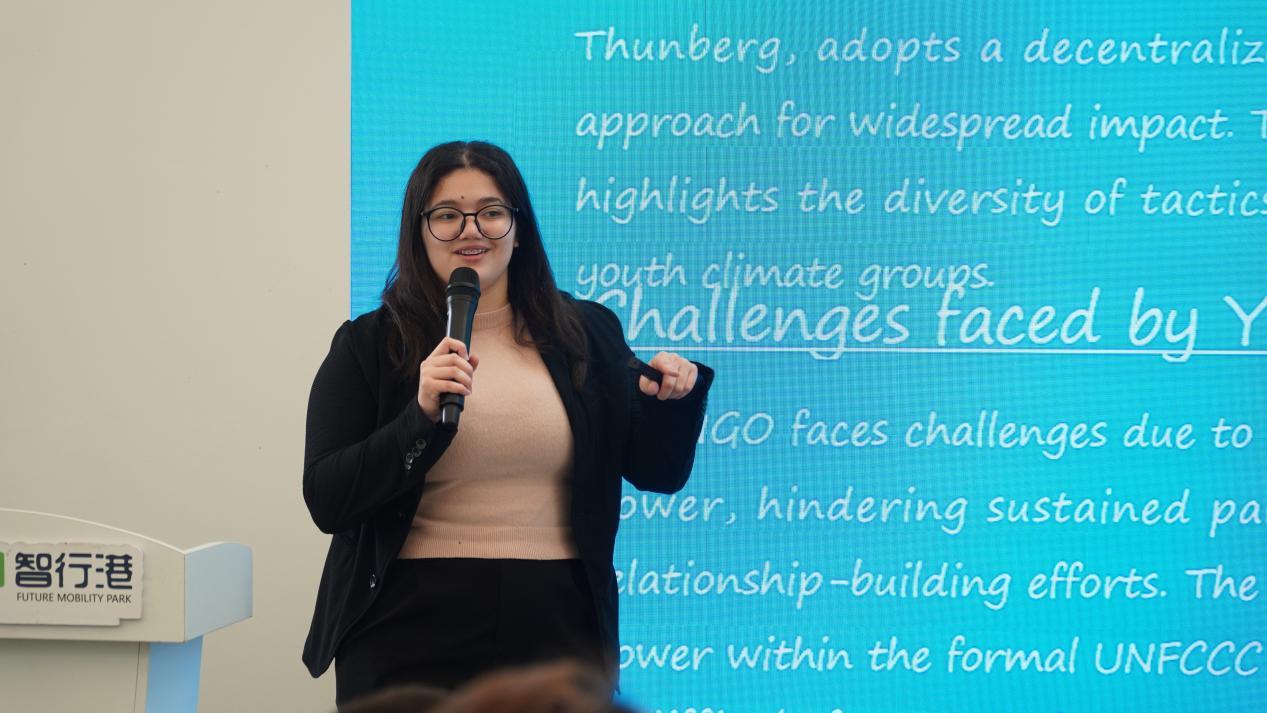
Guest Speaker: Manal Bidar, Duke Kunshan University
Topic: Youth VS Climate Change: Exploring the Evolution and Influence of the Global Youth Climate Movement
Young people are a crucial driving force behind climate action, and their approaches to addressing climate change are diverse. In addition to conducting research, every young person should cultivate critical thinking and actively participate in climate action initiatives. A key step is to increase community awareness of climate change and engage in scientific education and advocacy. By storytelling, it is possible to establish personal connections, making climate action relevant and actionable for everyone.

Guest Speaker: Liu Sichen, Affiliated Foreign Language School, Shanghai International Studies University
Topic: Illuminating Climate Action with the Light of Scientific Research and Leadership
The relationship between climate action and scientific research is extremely close. The theoretical support and practical tools for most climate action initiatives come from various research results. In my research exploration, I first studied the temporal variation characteristics of carbon dioxide in China through desktop research, delving deep into the actual impact of carbon emissions on our lives. Subsequently, I was fortunate to receive the support of the Shanghai Talent Plan, which allowed me to conduct experiments on the electrocatalytic reduction of atmospheric carbon dioxide in a professional laboratory. Through this research, I proposed and designed a practical device model and presented new methods for the treatment of industrial waste gases.
In addition to my research endeavors, I mobilized my fellow students to participate in themed workshops on terrestrial and aquatic biology, leading them to engage in activities such as plastic cup recycling, charity sales, and tree planting to increase peer involvement in climate action.
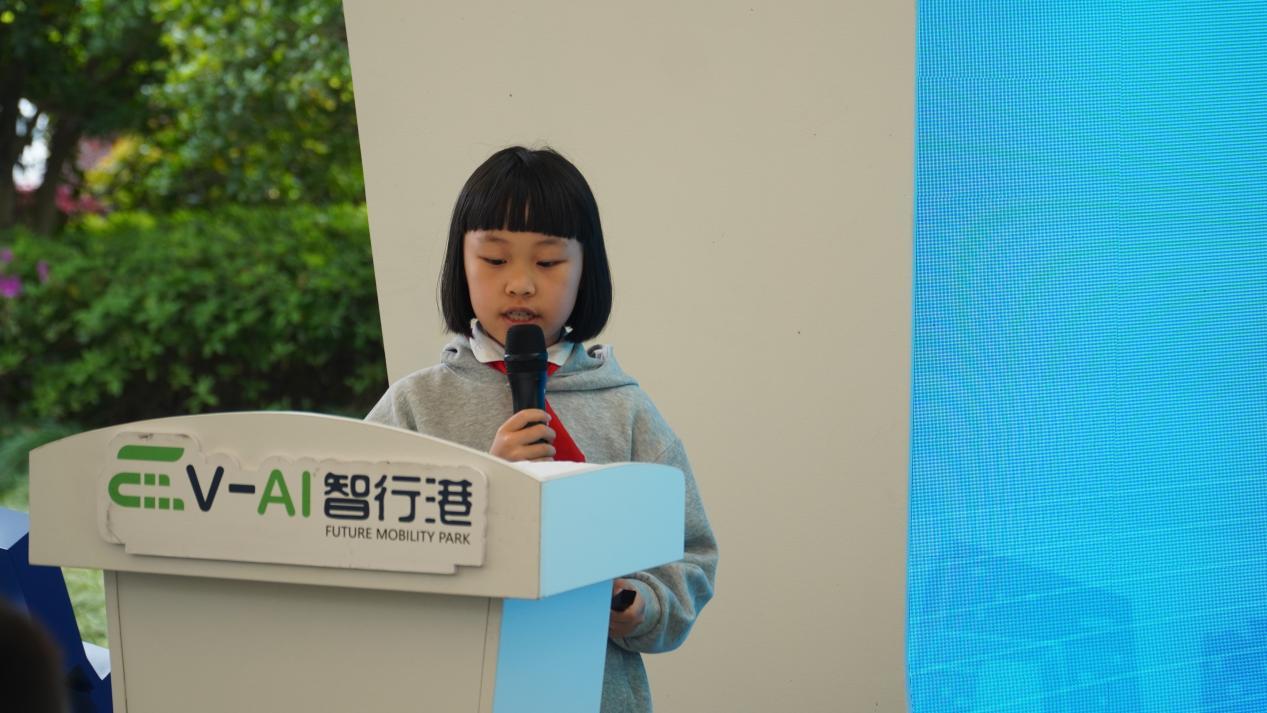
Guest Speaker: Shen Youzhu, 3rd Grade, Penglai Road Second Elementary School
Topic: A Clean and Efficient Cultivation Method—Water-saving Irrigation System
The issue stemmed from daily life. Common irrigation methods in daily life often involve high water consumption and issues with water evaporation exceeding absorption. Therefore, I designed an innovative device consisting of a water injection pipe, a seepage layer, and small holes, aiming to achieve precise water conservation and efficient irrigation while being environmentally friendly and cost-effective. Experimental and practical growth tests have confirmed the effectiveness of this device.

Guest Speaker: Gao Zihan, Xi’an Jiaotong-Liverpool University
Theme: Re-evaluation of WBA China ESG Performance-2021 Food and Agriculture Benchmark
In the process of transforming sustainable food systems, from planting and harvesting, to processing, packaging, transportation, sales, consumption, and kitchen waste management, it encompasses many stages. In driving the transformation of sustainable food systems, relevant companies play an extremely important role. Companies should strive towards four goals: better production, better nutrition, better environment, and better living. They should set achievable internal targets and disclose more practical actions in their reports to facilitate learning among peers.
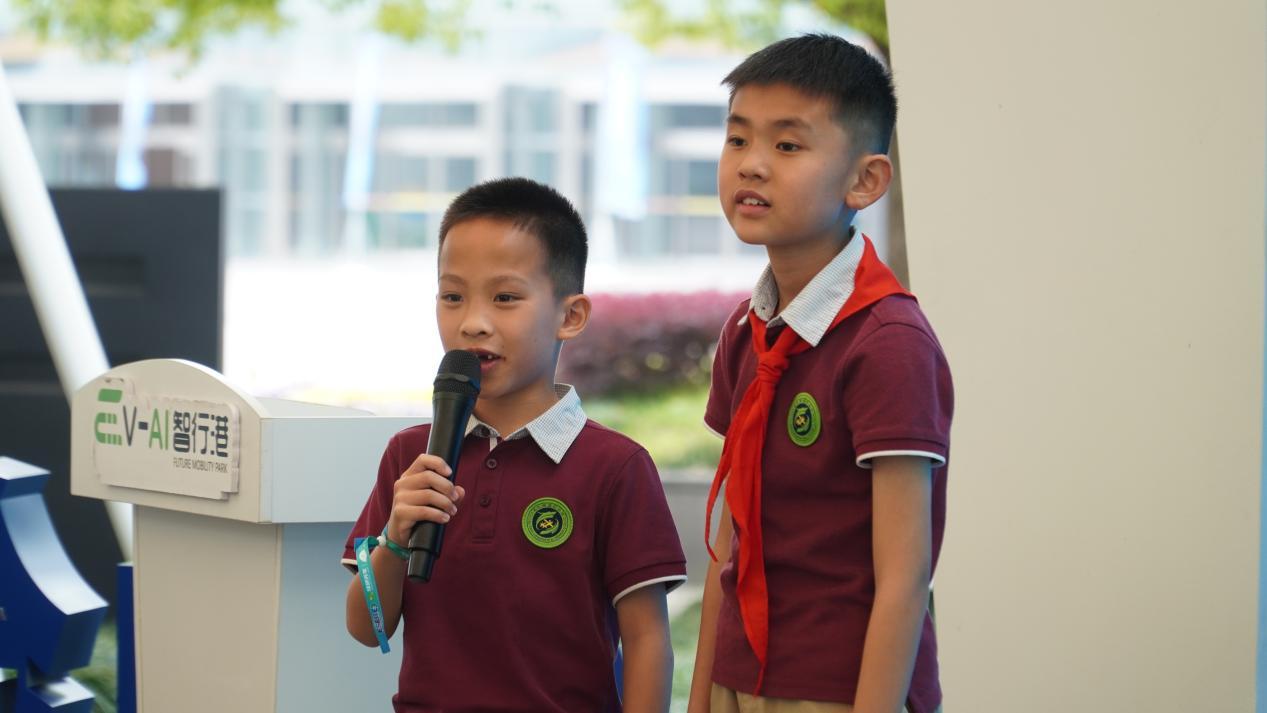
Guest Speakers: Cao Yuxuan, Hu Mingxuan, Shang Jinyue, Longhutang Primary School, Xinbei District, Changzhou City
Topic: Green and Low-carbon, Prioritizing Water Conservation
While taking a shower, I noticed that there’s water splashing outside when I use a bucket to catch the cold water that initially comes out of the water heater, and there are also water droplets splashing all around. This issue inspired our group to have a discussion, raising awareness about the importance of water-saving equipment. Designing water-saving devices can reduce water resource consumption, energy conservation, carbon emission reduction, and enhance public awareness of water conservation, promoting sustainable development in society. However, the design of water-saving devices needs to adapt to various scenarios in order to be accepted and utilized by more people. Our team designed two types of collection buckets, suitable for both showers and regular taps, using discarded materials, always adhering to the concept of low-carbon environmental protection. Our innovation received the Second Prize in the Changzhou Life Water Technology Invention Awards. Through this activity, I realized that small problems in life can be solved through collaboration, and everyone can contribute to energy conservation and emission reduction in daily life, making a difference in environmental protection. Promoting the application of this technology can reduce water resource wastage, improve utilization efficiency, and help address climate change. Finally, we used artwork to advocate for water conservation because water is life.
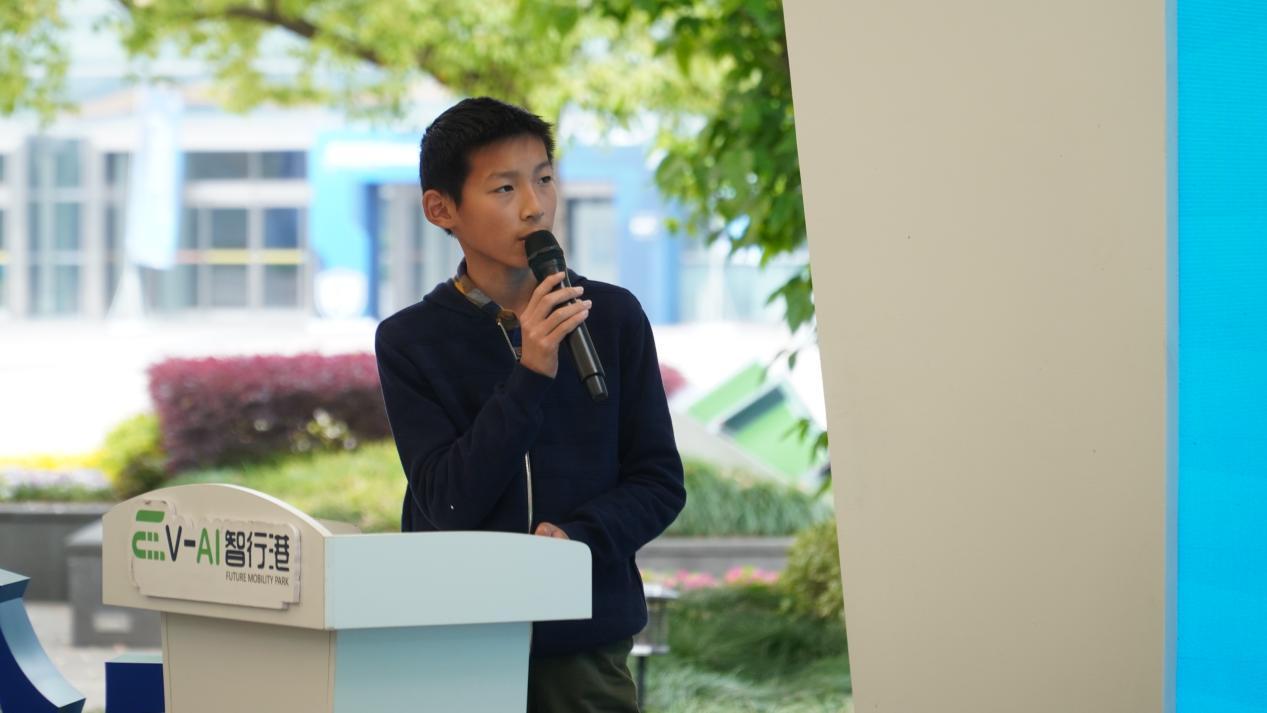
Guest Speaker: Lou Shangda
Topic: Climate Action in a Zero Waste City
The key objective of the dual carbon action is to conserve resources, reduce waste generation, and lower carbon emissions during the disposal process. My team has proposed a comprehensive solution, including an Octopus Intelligent Classification System, Beehive Storage and Recycling System, Lobster Carbon Purification System, and Sunflower Solar Energy Absorption System. The Octopus Intelligent Classification System uses image recognition technology to effectively sort waste into different channels, while the Beehive Storage and Recycling System categorizes and stores different types of waste for reuse based on big data management. The Lobster Carbon Purification System uses lasers to convert residual materials into carbon dioxide and water, then transforms them into starch or sugar. The Sunflower Solar Energy Absorption System simulates sunflower heads to provide energy to underground reactors and store electricity. The operation of these systems combines waste sorting and energy utilization, emphasizing accurate classification and timely processing from the source to maximize resource utilization. The aim is to achieve waste reduction, lower carbon emissions, and contribute to addressing climate change.
Comment
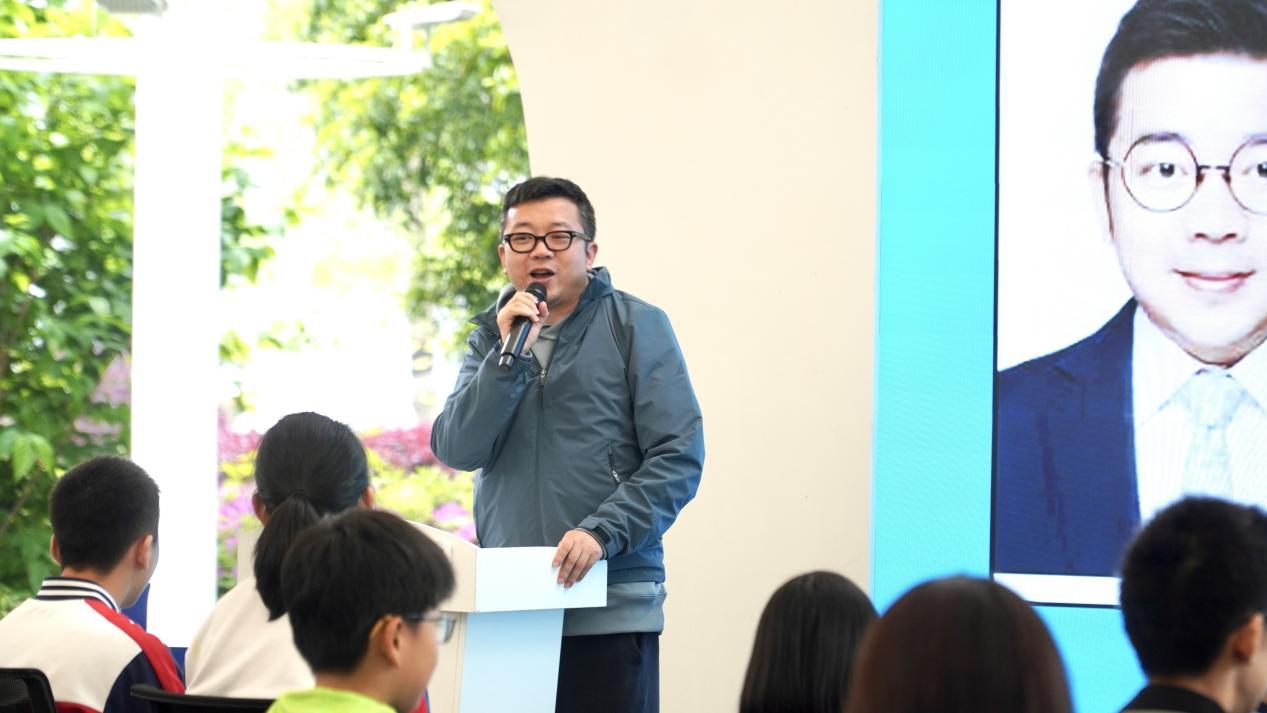
Mr. Dai Jian, the Science Popularization Instructor at the China Welfare Institute Children’s Palace
Research by young people should stem from real-life issues, and the outcomes of these studies should be continued in a series, deepened, and refined from one generation to the next. It is crucial for young people to materialize these research outcomes and ensure their sustained impact on the social environment. This lasting influence will provide valuable references for future researchers and decision-makers and make significant contributions to driving sustainable development in society.
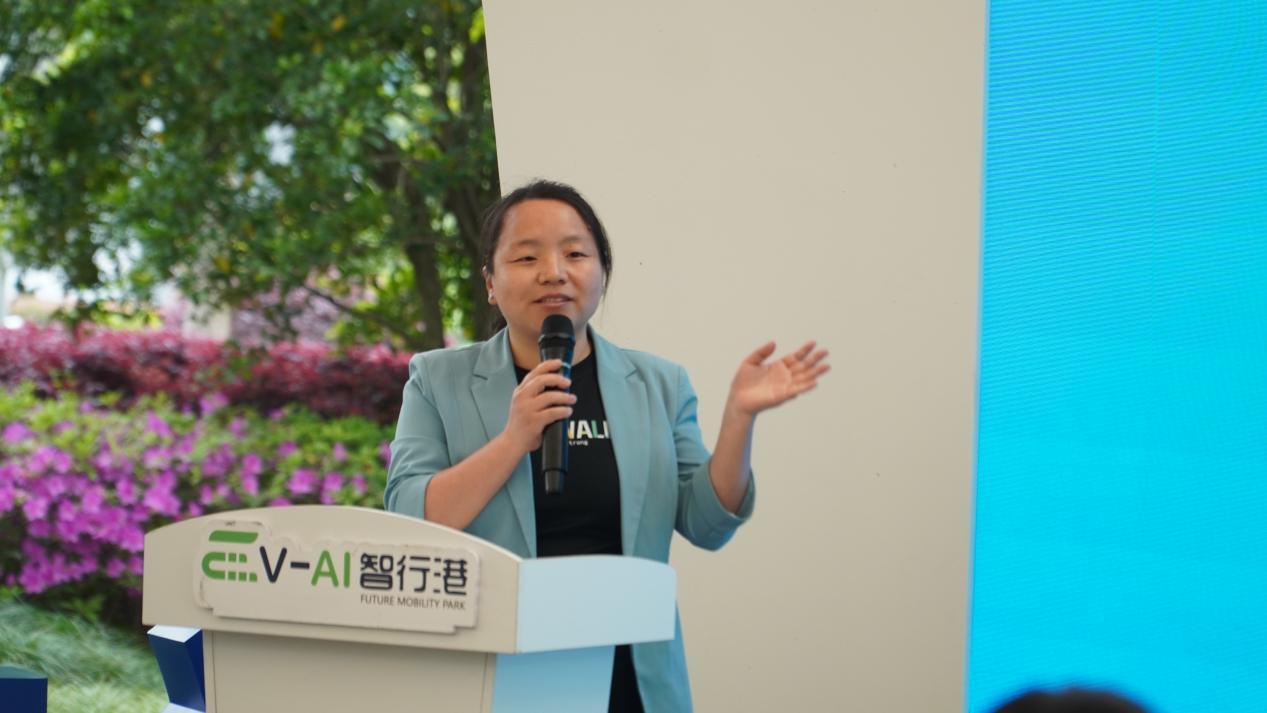
Ms. Yu Xianrong, The Nature Education Department of the Publicity and Education Center of the Ministry of Ecology and Environment
The research of young people is a valuable asset. Throughout the research process, it is essential to cultivate one’s scientific research qualities, psychological qualities, and teamwork ability. Under the guidance of senior mentors, each piece of work is vibrant and unique. At the same time, every effort should continue to produce more impactful results, to assist in the harmonious coexistence of people and nature, and to promote sustainable social development.
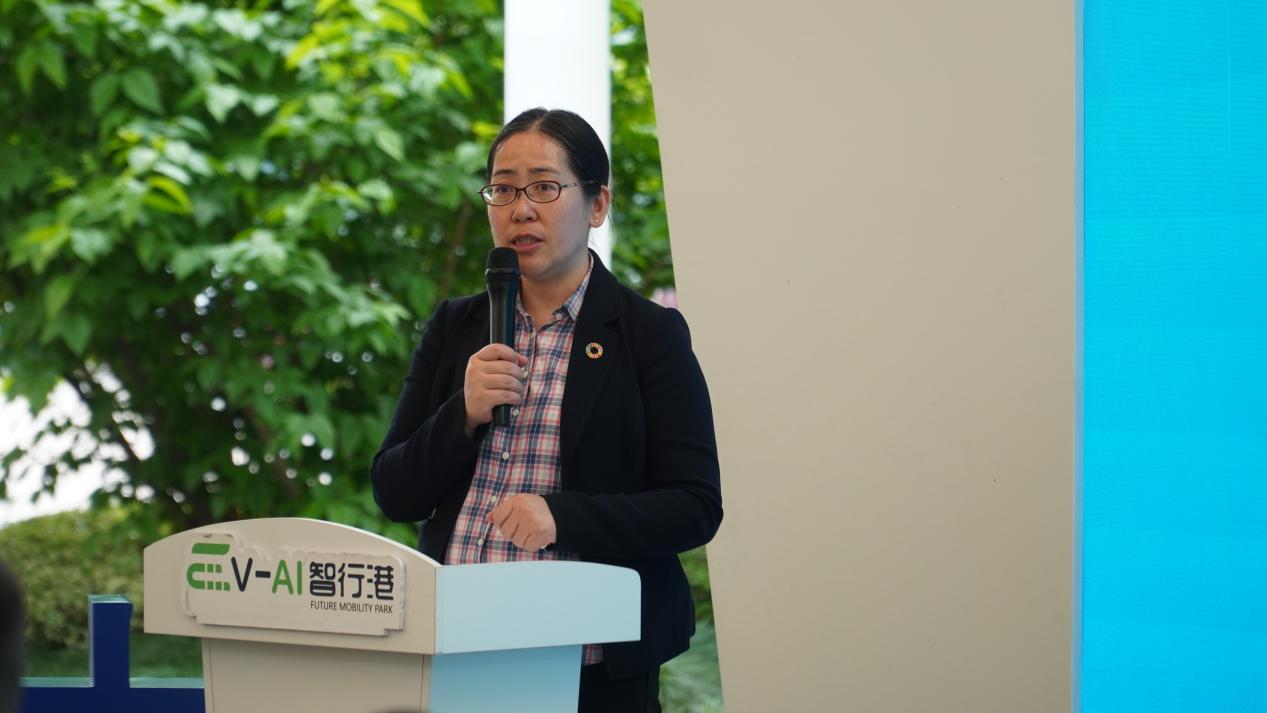
Ms. Ni Huan, Founder and Director of Green Light-Year
When young people gather together to share their scientific and technological achievements and climate action practices with the public, they can convey a powerful message – the crisis of climate change is right around us. As the new generation facing the challenge of climate change head-on, every young person should strive to become a solution maker, starting from themselves, inspiring those around them, actively empowering more members of the public, and encouraging more people to embrace sustainable lifestyles, together creating a sustainable future.

